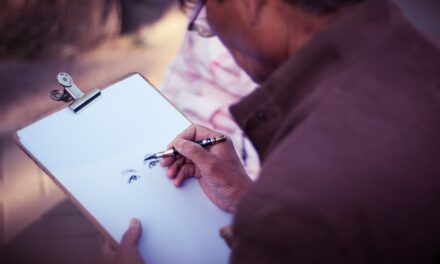Baroque painting emerged in the late 16th century and flourished throughout the 17th century, marking a significant departure from the restrained elegance of the Renaissance. Characterised by its exuberance, drama, and movement, Baroque art sought to evoke emotional responses from viewers, often through grandiose compositions and vivid imagery. This period was not merely an artistic movement; it was a reflection of the tumultuous socio-political landscape of Europe, where religious conflicts and the rise of absolute monarchies shaped the cultural milieu.
Artists of this era embraced a more dynamic approach to their work, employing techniques that would engage the viewer on a visceral level. The term “Baroque” itself is derived from the Portuguese word “barroco,” meaning a misshapen pearl, which aptly describes the ornate and sometimes chaotic nature of the art produced during this time. Baroque painting is distinguished by its dramatic use of light and shadow, intense colour palettes, and a focus on realism that often included emotional and spiritual themes.
Artists such as Caravaggio, Peter Paul Rubens, and Rembrandt van Rijn became synonymous with this style, each contributing unique interpretations that would influence generations to come. The Baroque period was not only a time of artistic innovation but also a period that sought to communicate the complexities of human experience through visual storytelling.
Summary
- Baroque painting is a style that emerged in the 17th century, characterised by its dramatic use of light and shadow, emotional intensity, and theatrical compositions.
- Drama played a significant role in Baroque painting, with artists using dynamic compositions and intense emotions to create powerful and engaging artworks.
- Chiaroscuro, the use of strong contrasts between light and dark, was a key technique in Baroque art, adding depth, drama, and a sense of realism to the paintings.
- Caravaggio was a master of chiaroscuro, using it to create dramatic and emotionally charged scenes in his artworks, influencing many Baroque artists.
- Rembrandt also utilised chiaroscuro in his Baroque paintings, using it to convey deep emotions and create a sense of intimacy and realism in his portraits and historical scenes.
The Influence of Drama in Baroque Painting
Drama is perhaps the most defining characteristic of Baroque painting, manifesting itself in both subject matter and technique. Artists sought to capture moments of tension and emotion, often depicting scenes of conflict, religious fervour, or human suffering. This emphasis on drama was not merely for theatrical effect; it was a means of engaging the viewer’s emotions and inviting them into the narrative.
The use of dynamic compositions, where figures are often arranged in diagonal lines or clustered together, creates a sense of movement that draws the eye across the canvas. This technique serves to heighten the emotional stakes of the scene, making it feel immediate and urgent. Moreover, the dramatic elements in Baroque painting were often enhanced by the use of chiaroscuro—the stark contrast between light and dark—which added depth and dimension to the figures and settings.
This interplay of light and shadow not only created a three-dimensional effect but also intensified the emotional impact of the artwork. For instance, in religious paintings, light might illuminate a saint or divine figure, symbolising their holiness amidst a darker background that represents sin or despair. This visual language allowed artists to convey complex narratives and moral lessons, making their works resonate with viewers on both intellectual and emotional levels.
Understanding Chiaroscuro in Baroque Art
Chiaroscuro, an Italian term meaning “light-dark,” is a technique that became synonymous with Baroque painting. It involves the use of strong contrasts between light and shadow to create a sense of volume and depth in two-dimensional works. This technique was not new; it had been employed by artists during the Renaissance, but Baroque painters took it to new heights, using it as a tool to enhance drama and emotional intensity.
The manipulation of light became a central element in their compositions, allowing artists to guide the viewer’s gaze and highlight specific aspects of their narratives. In Baroque art, chiaroscuro served multiple purposes. It could evoke mood—soft light might suggest serenity or divinity, while harsh shadows could imply danger or moral ambiguity.
Additionally, chiaroscuro was instrumental in creating a sense of realism; by mimicking how light interacts with objects in the real world, artists were able to produce lifelike representations that resonated with viewers. This technique also allowed for greater experimentation with colour and texture, as artists learned to layer paint in ways that would enhance the illusion of depth. The result was a visual language that spoke directly to the viewer’s emotions, making Baroque paintings not just images but immersive experiences.
Caravaggio and the Use of Chiaroscuro
Caravaggio stands as one of the most influential figures in Baroque painting, renowned for his masterful use of chiaroscuro. His innovative approach transformed how light was depicted in art, moving away from the softer transitions seen in Renaissance works to a more dramatic interplay between light and shadow. Caravaggio’s paintings often feature stark contrasts that create an almost theatrical atmosphere, drawing attention to key figures while enveloping others in darkness.
This technique not only heightened the emotional intensity of his subjects but also imbued them with a sense of immediacy that was revolutionary for his time. One of Caravaggio’s most famous works, “The Calling of Saint Matthew,” exemplifies his mastery of chiaroscuro. In this painting, a beam of light illuminates Matthew as he is called by Christ, while the surrounding figures remain shrouded in shadow.
This not only highlights Matthew’s moment of revelation but also serves to create a dramatic tension within the composition. Caravaggio’s ability to capture human emotion through this technique set him apart from his contemporaries and established him as a pivotal figure in the evolution of Baroque art. His influence extended far beyond his lifetime, inspiring countless artists who sought to emulate his dramatic style and innovative use of light.
Rembrandt and Chiaroscuro in Baroque Painting
While Caravaggio is often credited with pioneering chiaroscuro in Baroque painting, Rembrandt van Rijn took this technique to new depths, infusing it with profound psychological insight. Rembrandt’s works are characterised by their rich textures and subtle gradations of light and shadow, which he used to explore complex human emotions and narratives. Unlike Caravaggio’s often stark contrasts, Rembrandt’s chiaroscuro is more nuanced; he employed softer transitions that create an intimate atmosphere, inviting viewers into the inner lives of his subjects.
In paintings such as “The Night Watch” and “Self-Portrait with Two Circles,” Rembrandt’s use of light serves not only to define form but also to convey character and mood. In “The Night Watch,” for instance, the interplay of light highlights key figures while casting others into shadow, creating a sense of hierarchy within the composition. This technique allows viewers to engage with the narrative on multiple levels—recognising both individual personalities and their roles within a larger context.
Rembrandt’s ability to evoke emotion through chiaroscuro solidified his reputation as one of the greatest masters of Baroque painting, leaving an indelible mark on art history.
The Emotional Impact of Baroque Painting
The emotional impact of Baroque painting cannot be overstated; it was one of the primary goals for artists during this period. By employing techniques such as chiaroscuro and dynamic compositions, they sought to elicit strong feelings from their audience—whether it be awe, compassion, or even fear. The subject matter often revolved around themes of faith, redemption, and human suffering, reflecting the tumultuous times in which these artists lived.
As Europe grappled with religious upheaval and political strife, Baroque painters responded by creating works that resonated deeply with contemporary viewers. This emotional engagement was further enhanced by the use of symbolism within Baroque art. Artists often incorporated elements that would evoke specific feelings or ideas—such as light representing divinity or darkness symbolising sin—allowing viewers to connect with the artwork on a personal level.
The result was a body of work that transcended mere representation; it became a means for exploring complex human experiences and emotions. In this way, Baroque painting served not only as an artistic expression but also as a reflection of society’s struggles and aspirations during a time of great change.
Baroque Still Life and Chiaroscuro
While much attention is often given to historical or religious themes in Baroque painting, still life emerged as a significant genre during this period as well. Baroque still life paintings are characterised by their meticulous attention to detail and vibrant use of colour, often incorporating chiaroscuro to enhance their visual impact. Artists such as Pieter Claesz and Willem Kalf employed this technique to create compositions that were not only aesthetically pleasing but also rich in symbolism.
The interplay between light and shadow added depth to these arrangements, transforming everyday objects into subjects worthy of contemplation. In these still life works, chiaroscuro served multiple purposes: it highlighted textures—such as the sheen on fruit or the softness of fabric—and created an atmosphere that invited viewers to ponder deeper meanings behind seemingly mundane objects. For instance, a simple arrangement of flowers might be imbued with symbolism related to mortality or transience through its careful manipulation of light and shadow.
This approach allowed artists to elevate still life from mere decoration to a profound commentary on life’s fleeting nature. Thus, Baroque still life became an essential part of the broader narrative within Baroque art, showcasing how even ordinary subjects could evoke powerful emotions through masterful technique.
Legacy of Baroque Painting in Art History
The legacy of Baroque painting is vast and enduring, influencing countless artists across various movements throughout history. Its emphasis on drama, emotion, and realism laid the groundwork for subsequent styles such as Romanticism and Realism. The techniques developed during this period—particularly chiaroscuro—continued to be employed by later artists who sought to capture similar emotional depth in their work.
Moreover, Baroque painting’s focus on narrative and character paved the way for modern storytelling within visual art. As art history progressed into the 18th century and beyond, elements of Baroque style persisted in various forms. The theatricality seen in Rococo art can be traced back to Baroque influences, while movements like Neoclassicism sought to balance its exuberance with classical restraint.
Even contemporary artists draw inspiration from Baroque principles—whether through dramatic lighting or emotive subject matter—demonstrating that its impact remains relevant today. Ultimately, Baroque painting stands as a testament to humanity’s enduring quest for expression through art, capturing both the complexities of life and the depths of emotion in ways that continue to resonate with audiences around the world.
Baroque painting is known for its dramatic use of chiaroscuro, a technique that creates a strong contrast between light and dark. This style can be seen in works such as Caravaggio’s “The Calling of Saint Matthew” and Rembrandt’s “The Night Watch.” For more insights into the world of art and imagery, check out


